Archive
2021
KubaParis
The Ground Beneath Us Moves Upwards
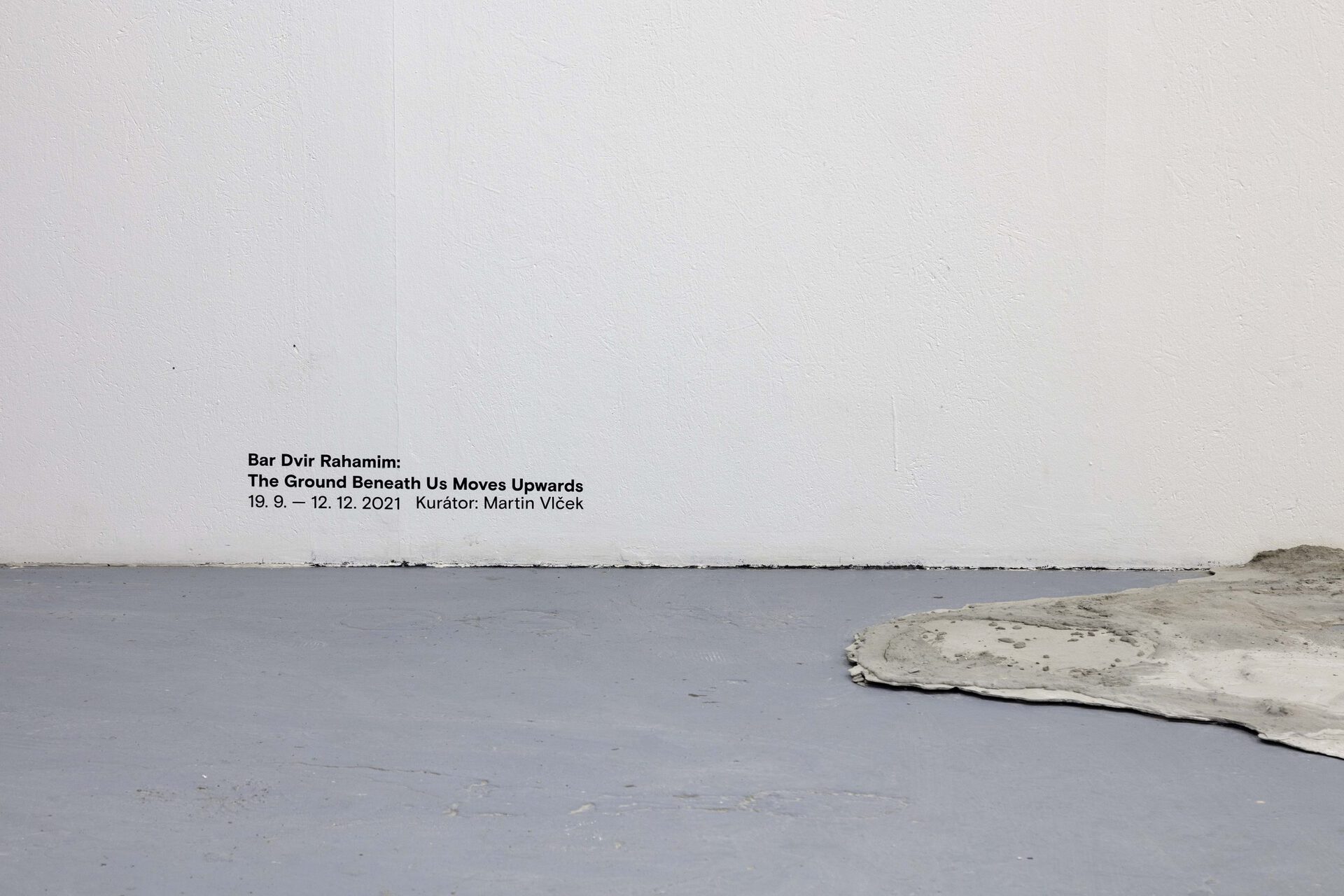

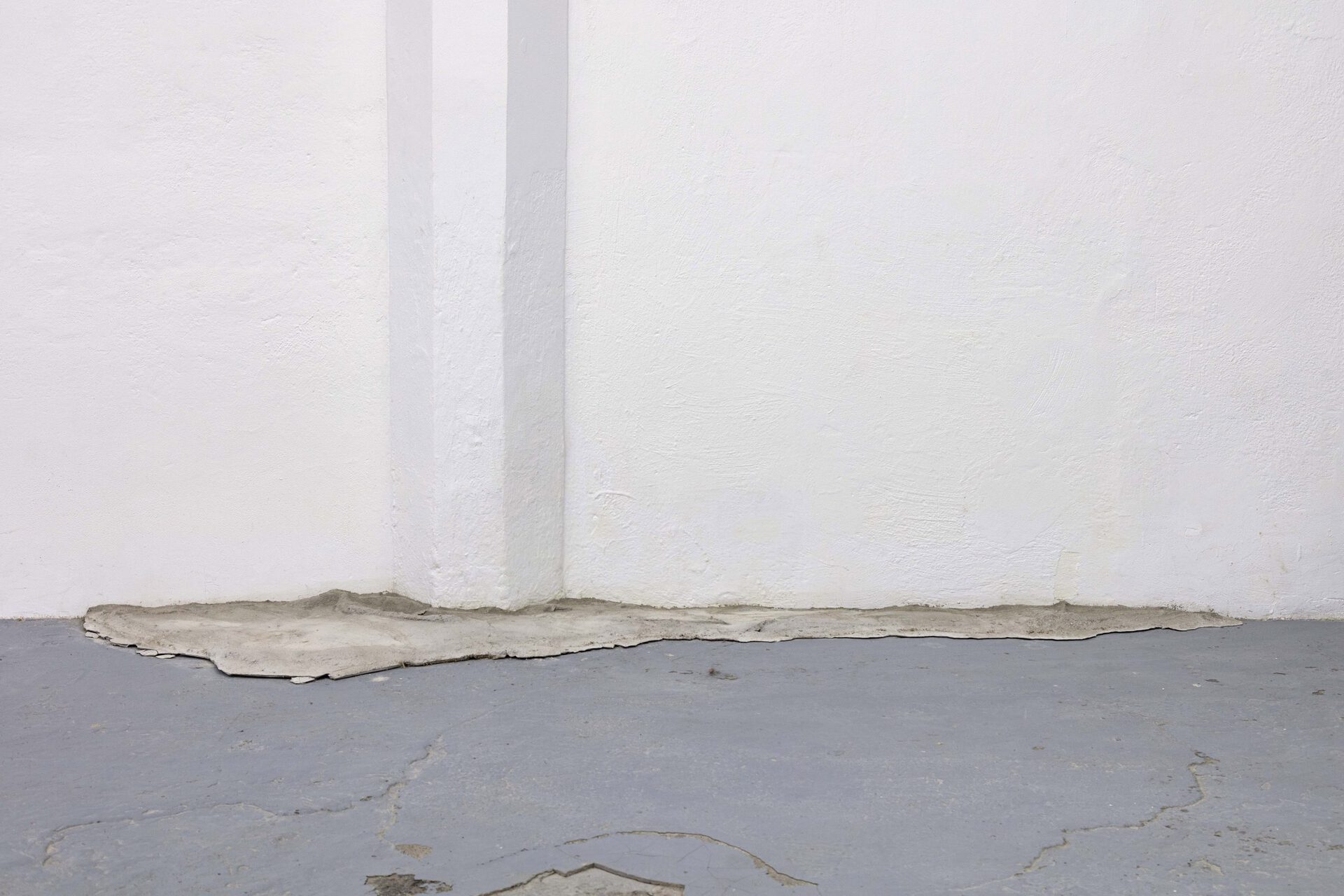
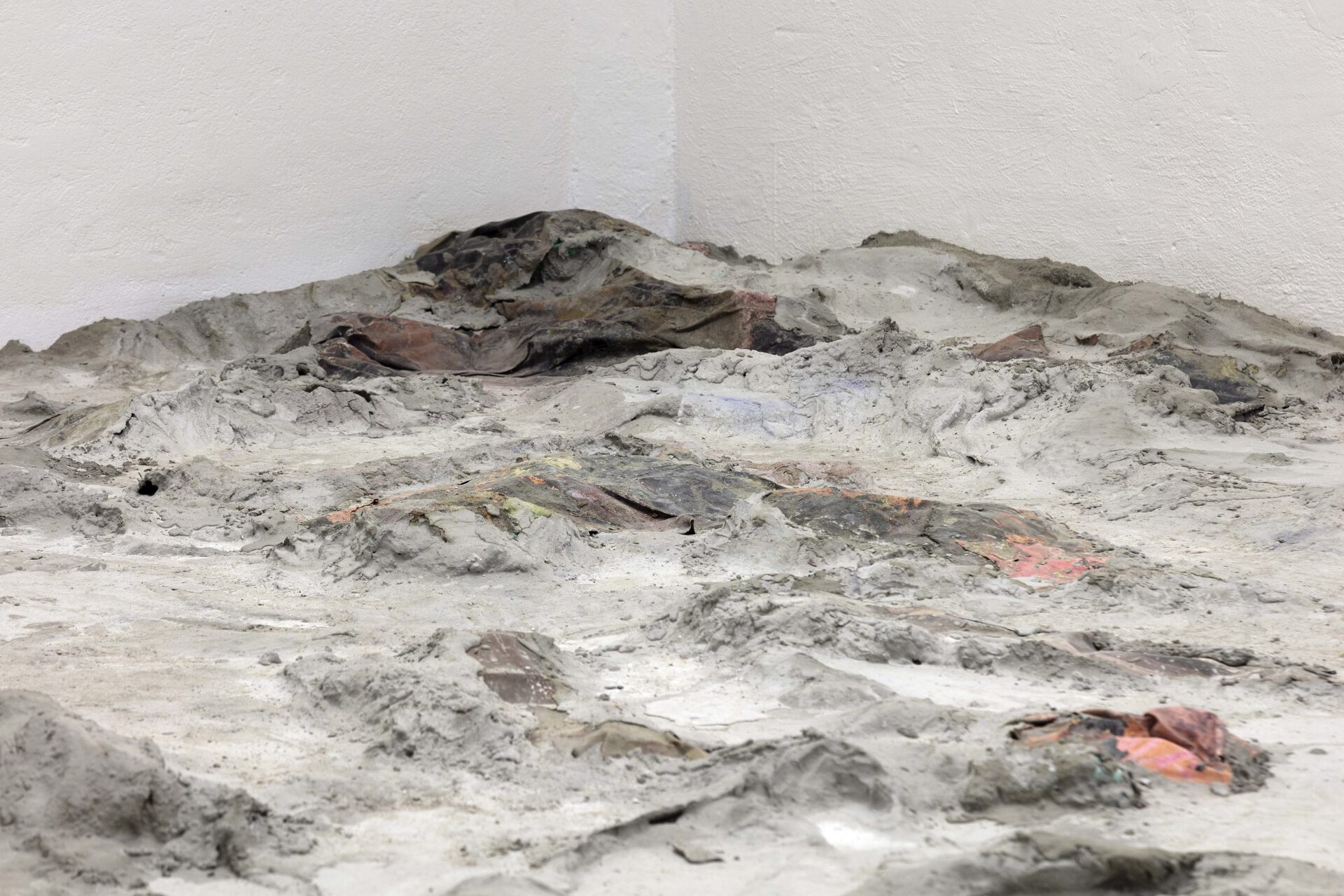
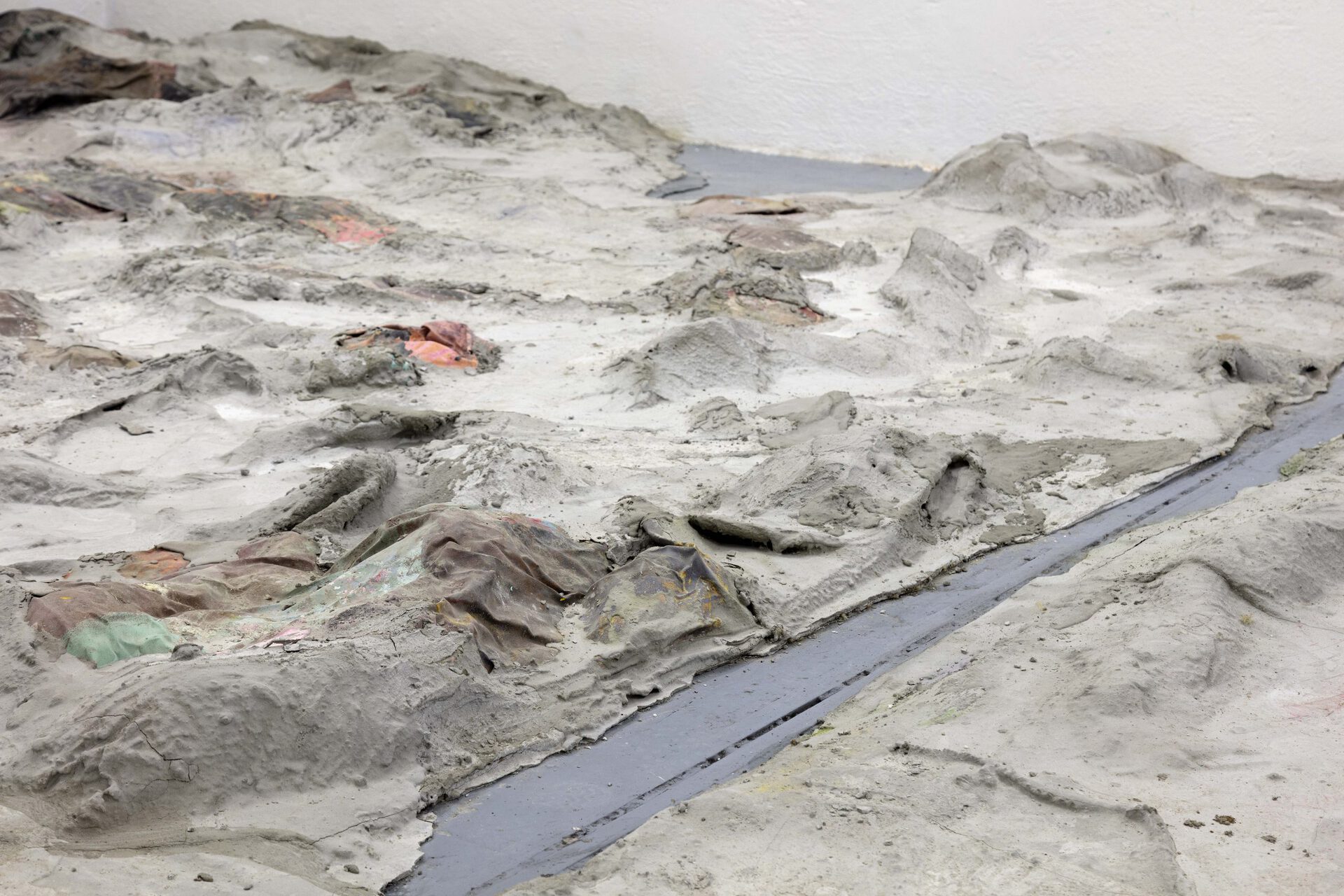


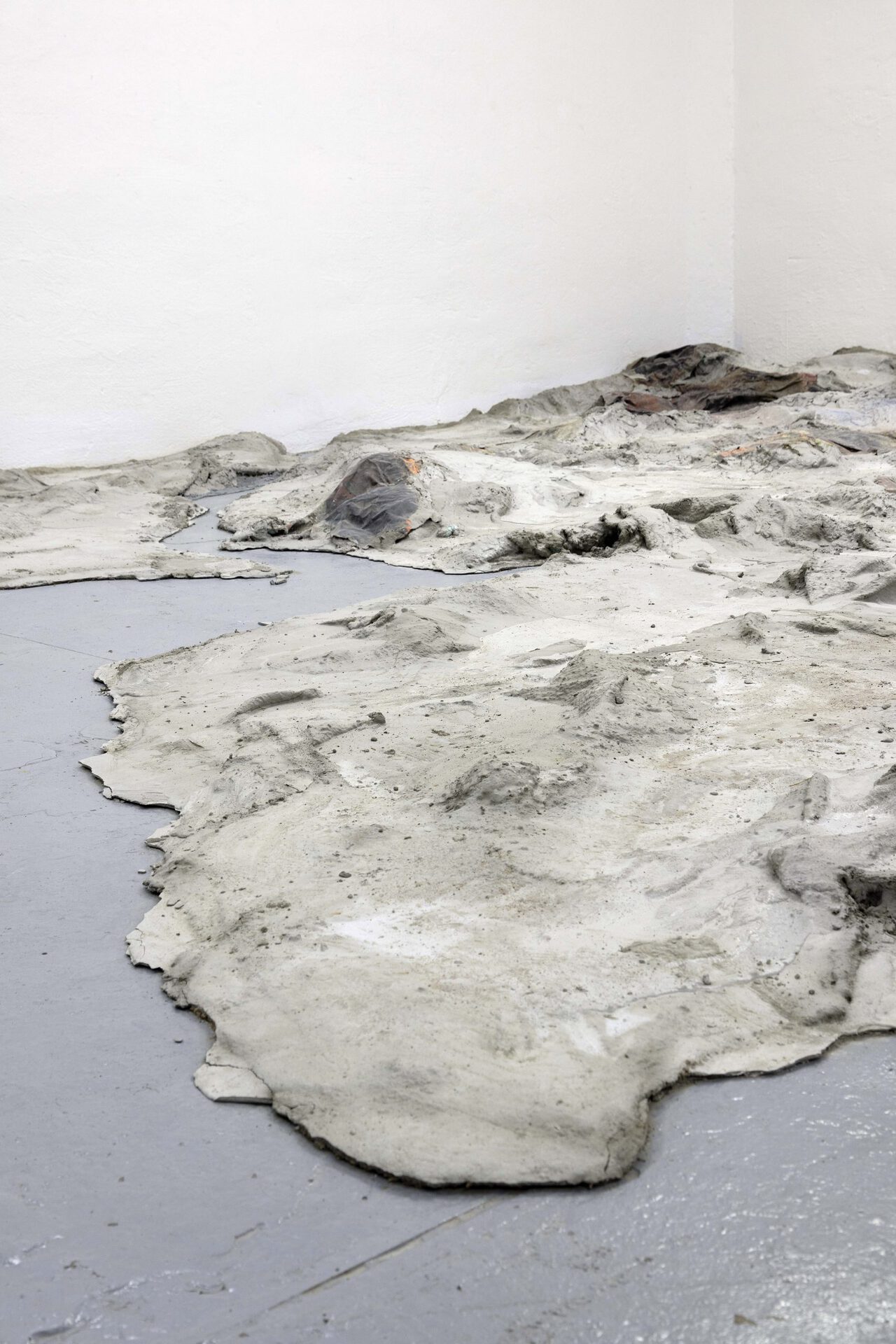
Location
Pragovka Gallery, Pragovka Art District, Kolbenova 923/34a, Prague, 190 00, Czech RepublicDate
17.09 –11.12.2021Curator
Martin VlčekPhotography
Marcel RozhoňSubheadline
The history of the building known as a Big E, now as the central point in Pragovka art distirct area with studios, café and galleries, comes back to 1920-1930. It was built in purpose as storage for the new Ministry of Post and Telegraphs. In later 1940s it started to be one of the new buildings for Pragovka factory. Heavy goods, imprints of time and traces, layers of a history of the building, of the workers, of the visitors. The whole history worked as a staring point for a site specific intervention made by Bar Dvir Rahamim during her residency at Pragovka in late summer 2021. While entering the Foyer of the Pragovka Gallery, you are in the middle of her installation, you are on the path of Bar Dvir´s journey, her floors, full of passion for painting, leading a dialogue between bodies, skin, material, color... The title of the exhibiton at Pragovka "The Ground Beneath Us Moves Upwards" was borrowed from a curatorial text by Moran Solomarsky describing Bar Dvir´s previous floor dedicated site specific work — Scarlet yarn and hyssop set in a former Asylum in Jerusalem in 2020. The floor at Pragovka is after Bar Dvir´s intervention kind of a portrait of the breath, captured movent of the skin (the skin of the body-floor and body-painting and of course of the artist´s body and Pragovka (Storage) itself. Freely breathing after holding and carrying heavy goods from the storage times.The work welcomes all visitors to be entered, walked on, touched, and shaped by their bodies.Text
Dearest visitor, welcome to the Foyer!
Welcome to the building „Big E“.
Look around.
What do you see?
Yes, the characteristical octagonal pylons looking like big mushrooms.
What else?
The windows, characteristical of industrial architecture.
Big doors.
High ceiling...
And..?
...a floor!
Underneath and all around you.
The floor that is supporting you.
The platform, that was holding so many things
and so many people before you had come for a visit.
The (hi)story.
The dialogue.
The body.
The building known as a Big E is the central point, that makes Pragovka as we know it nowadays. With studios, galleries, and a Café was this architectural beauty a new building for the Pragovka factory since the late 1940s. But the roots of the building come back even two more decades back. It was built during the 1920s and 1930s in purpose as storage for the new Ministry of Post and Telegraphs. The Tram station Poštovská („Postoffice´s“) nearby commemorates the origin of this tremendous building. Perhaps it is one of the most beautiful buildings of that kind. The floors and the ceilings (becoming a floor in higher etages) carried a heavy load. The building itself is heavy and light (inspirational and open) at the same time. You can feel fresh air when you go out, you can feel a strong atmosphere when coming in. You can feel both when walking around. Just keep reading...
Heavy goods, imprints of time and traces, layers of a history of the building, of the workers, of the visitors.
When you enter the foyer, you are not only in the entering hall, you are kind of a middle of a long path, of a long journey of time. While entering the intervention, site-specific installation, and the environment (all in one) made by Bar Dvir Rahamim, you are guided to focus on something that is normally shadowed by the walls, windows, and pylons. You are on the path of Bar Dvir´s journey, her floors, on the path of her passion for painting, on a path that is a dialogue between bodies, skin, material, color, smell, and even sound (Bar Dvir let me listen to the speaking cement soaked with water, whispering, but in my head happily shouting: I am here, and I am glad to meet you!).
***
As I had briefly interviewed Bar, she had told me, „First of all, I am a painter (not a sculpturor)“. And I must admit, it is true, although I would prefer to describe her work for Pragovka as an installation/painting or intervention/painting. The painting and the place itself are both extremely important in this dialogue! You can see the passion, you can see soft layers of materials, of colors, dark and light, bright, grey, black, and white. It´s poetry. Concrete as an aquarelle on a paper-floor, oil on a canvas put into concrete and as an informel painting upsidedown. You can feel love and sense to the places with which was (and still is) played a dialogue. It was so strong to see Bar Dvir and her partner Eden Rahamim coworking on this magical intervention, to watch her mapping and tracing the space before starting to work. The place was leading her. The work is an outcome of the art research. Site-specific and body-specific work. Bar started to do something and then she destroyed it, she started differently. It was research, importance of opening a child inside an adult. She showed me as crucial for her work and herself is being as a body-artist inside the process, leading dialogue with another body-material, art work. Relating to the place, which you need time to get to know. In the beginning Bar saw in the room a small kid running all-around some part of the floor with a „drawing“ or „scart“ on the floor made after the years. From the very beginning was this part-spot („heart“) of the room the main point for Bar. Finally, she decided to leave it as it is (just made the neighboring part to make an outline) and I was happy that it happened also to other strongly remarkable parts of this place called Foyer. Bar Dvir is not covering the floor, she is pointing on the floor. She is remarking on the overseen parts. Coming back to her second work focused on the floor made as site-specific (Scarlet yarn and hyssop set in a former Asylum in Jerusalem in 2020), its curator Moran Solomarsky used a pretty nice sentence in her curatorial text, that was borrowed for the title of this current exhibition at Pragovka: The Ground Beneath Us Moves Upwards. Small poetry is hidden in one line as a name for something that is kind of „from a different world“. For me, this perfectly describes the potential of the floor at Pragovka after Bar Dvir´s intervention. What I see is that the floor is in the movement, it is not covered, it is moving, freely breathing! It is the portrait of the breath of the movent of the skin. The skin of the body-floor and body-painting and of course of the artist´s body and Pragovka (Storage) itself.
Freely breathing after holding and carrying heavy goods from the storage times. Pragovka as a place to close the site-specific floor/painting triptych.
***
Relating back to the sentence by Solomarsky and back to Bar Dvir´s first and second painting work focusing on a floor (exhibition Scarlet yarn and hyssop at Hansen House, 2020, Jerusalem) and first from the triptych (Look at Me I Am Transforming, Bezalel MFA Thesis Show, 2019), now is Bar´s Pragovka Foyer not a classical „Foyer“. It is not an intro-duction, or pre-lude, or „pre-room. It´s another chapter, a path from a long way connecting Israel and the Czech Republic.
All that mentioned above shows how perfectly Bar Dvir´s work for Pragovka makes a nice introduction to the theme of the third Exhibition block at Pragovka Gallery ˗ Intimacy outcome and the residential program Fragments, Horizons and Verticals. The site-specific intervention and the painting itself show the intimacy of a body dialogue, of a material and space sensitivity, strong conceptual and sensational approach, relation to the past, physical experiencing presence (involving the history) and the future (horizon), verticality, and horizontality (walking and feeling the ground), connecting the ground and ceiling (verticality), fragments (paintings on canvas from previous works in a new context made just and only for this specific place that Pragovka offers to everyone who enters it), fragments of the place (some overwhelmed by painting, some „naked“, but remarkably more than ever before).
The work welcomes all visitors to be entered, walked on, touched, and shaped by their bodies.
Martin Vlček
Photo: Marcel Rozhoň
Martin Vlček